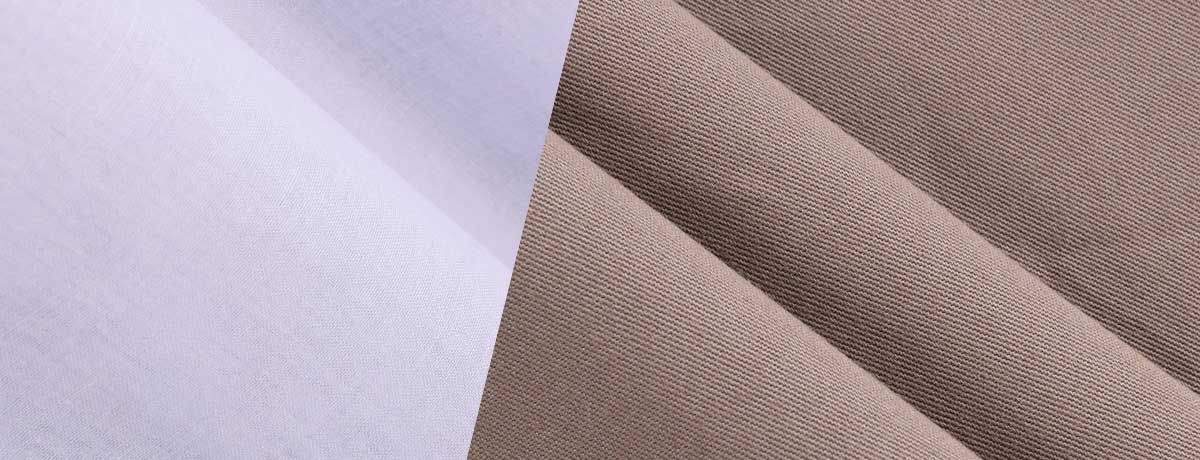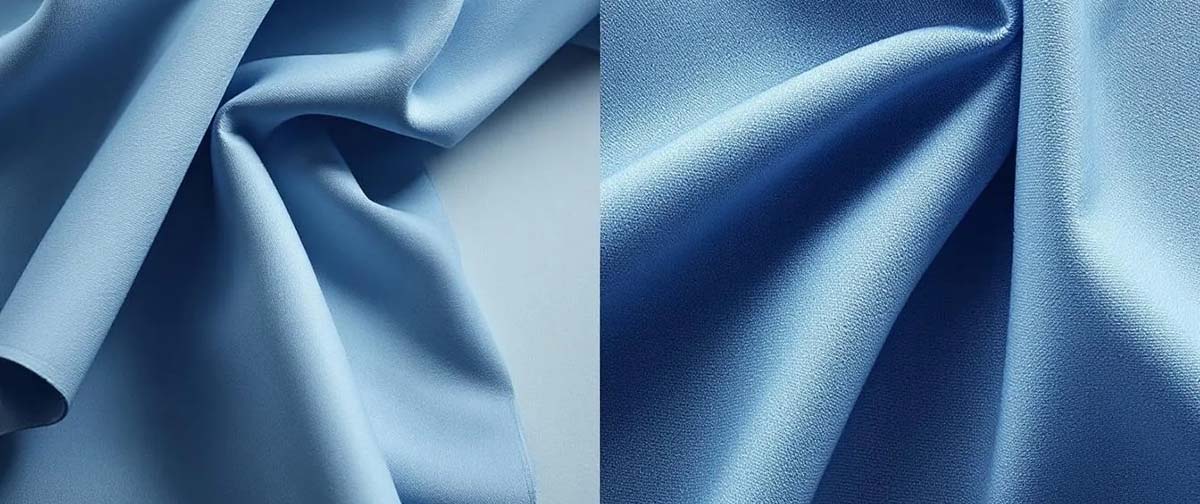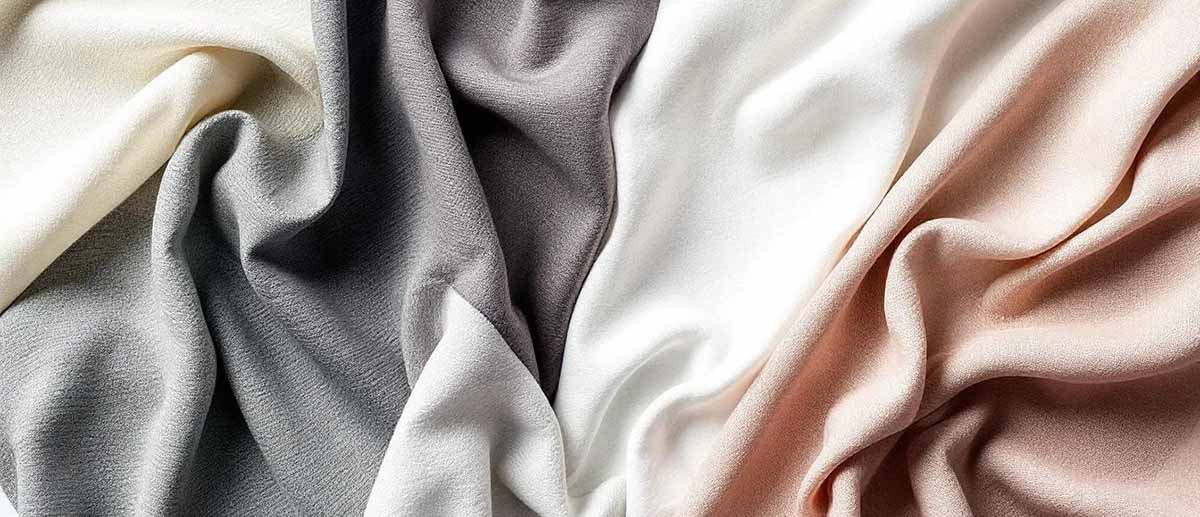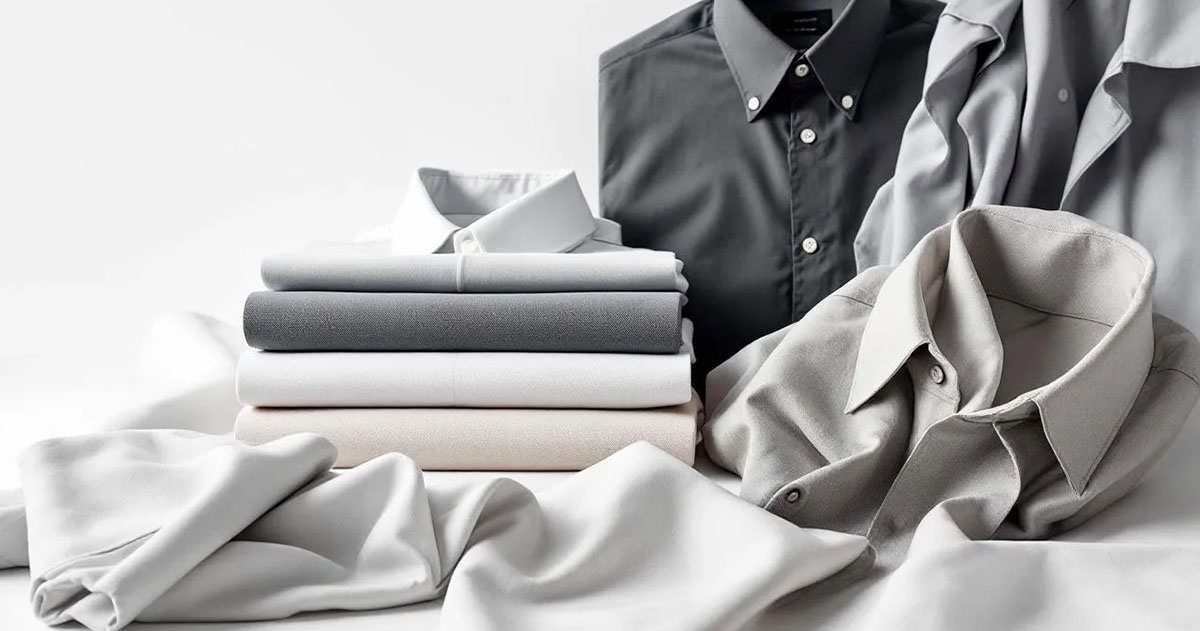Poplin vs Twill: The Best Fabric Choice for Your Wardrobe

Choosing between Poplin vs Twill comes down to their different features and what you need from your fabric. This guide will help you understand the key differences in weave, weight, durability, appearance, and comfort, so you can decide which fabric best fits your wardrobe.
Key Takeaways
-
Poplin is lightweight and breathable, making it ideal for warm weather and formal occasions, while twill is thicker, providing warmth and durability for cooler climates and casual settings.
-
The choice between poplin and twill depends on personal style, climate, occasion, and budget considerations, with poplin being generally more affordable and versatile for daily wear.
-
Proper care and maintenance are crucial for both fabrics, with specific guidelines for washing, drying, and ironing to preserve their appearance and longevity.
Poplin vs Twill: Key Differences

Poplin and twill fabrics are the two types of shirt fabrics that NoName specializes in for shirt manufacturing. Both fabrics offer unique benefits in terms of comfort, durability, and style. Understanding these differences will help you select the ideal fabric for your specific needs.
The key differences between poplin and twill lie in:
-
Weave patterns
-
Weight
-
Durability
-
Appearance
-
Comfort
Each of these aspects influences how the fabric behaves and feels when worn, making it essential to understand these styles’ characteristics and softness before making a choice.
We will explore these differences in more detail.
Weave Patterns
The most noticeable difference between poplin and twill fabrics is their weave patterns. Poplin is characterized by a plain weave, which involves weaving one yarn over one yarn. This technique creates a fine, smooth, and lightweight plain weave fabric that is breathable and comfortable.
On the other hand, twill fabric is distinguished by its diagonal weave pattern, created by weaving one yarn over two or more yarns. This method gives twill its characteristic diagonal pattern, which:
-
Enhances its strength
-
Provides a unique texture
-
Contributes to twill’s wrinkle resistance, making it a great option for maintaining a polished look with minimal effort. Additionally, this fabric weaves a strong foundation for various applications.
Fabric Weight
Another significant difference between poplin and twill fabrics is their weight. Poplin is known for being lightweight and breathable, making it an ideal fabric for shirts, especially in warm weather. Its light nature allows for excellent airflow, keeping you cool and comfortable throughout the day.
In contrast, twill fabric is thicker and slightly heavier than poplin. This added weight provides extra warmth, making twill a better choice for cooler weather or outerwear. The thick weave of twill also contributes to its durability, ensuring that garments made from this fabric can withstand more wear and tear over time.
Durability and Maintenance
When it comes to durability and maintenance, twill fabric has the upper hand. The diagonal weave of twill not only enhances its strength but also makes it more resistant to wrinkles and creases. This durability makes twill an excellent choice for frequent use, as it can withstand the rigors of daily wear without losing its polished appearance.
Poplin, while also durable, does not quite match the longevity of twill. However, its fine and light structure makes it suitable for a wide range of applications, from casual to semi-formal wear. Proper care and maintenance can help extend the lifespan of poplin garments, ensuring they remain a versatile addition to your wardrobe.
Appearance and Texture
In terms of appearance and texture, poplin and twill each have their distinct appeal. Poplin features a silky smooth finish with a subtle sheen, giving it an elegant and refined look. This soft smoothness makes poplin shirts ideal for formal occasions where a crisp, sharp appearance is desired.
Twill has the following characteristics:
-
A more structured and textured appearance due to its diagonal weave
-
A texture that adds a touch of formality, making fine twill shirts suitable for business and formal settings, including a stylish twill shirt
-
Fabric that hangs softly, providing a comfortable fit that complements its sophisticated look
Comfort and Versatility
When it comes to comfort and versatility, poplin and twill each shine in their own ways. Poplin’s breathable qualities make it a comfortable choice for warm climates, offering excellent airflow and keeping you cool throughout the day. Its lightweight nature also adds to its versatility, making poplin suitable for a variety of occasions from casual to semi-formal.
Twill, with its thicker and warmer composition, provides a tailored fit that is ideal for cooler weather and formal settings. Its structured texture and durability make it a reliable choice for those who prefer a more substantial fabric in their wardrobe. Ultimately, the choice between poplin and twill comes down to personal preference, climate, and the specific occasion you have in mind.
Choosing Between Poplin and Twill
Deciding between poplin and twill involves more than just their physical characteristics. It’s about understanding how each fabric fits into your lifestyle, the climate you live in, and your personal style preferences. While poplin is ideal for casual and semi-formal clothing due to its lightweight nature, twill’s heavier composition makes it better suited for colder climates and formal settings.
Considering seasonal suitability, the formality of the occasion, and budget helps you make an informed wardrobe decision. Let’s delve deeper into these factors to help you choose the ideal fabric for your suit needs.
Seasonal Suitability
The season and climate play a crucial role in determining the right fabric for your wardrobe. Poplin is often more suitable for warmer seasons due to:
-
Its lightweight qualities
-
Its breathable nature
-
Its ability to provide excellent airflow, making it ideal for staying cool and comfortable during hot weather.
On the other hand, twill fabric is favored in cooler weather for its thicker weave, which provides added warmth. The heavier composition of twill makes it a better choice for winter wardrobes, ensuring you stay warm while maintaining a stylish appearance. Choosing the right fabric based on the season can significantly enhance your comfort and style.
Formal vs. Casual Wear
When it comes to formal versus casual wear, the choice between poplin and twill becomes even more pronounced. Poplin shirts, with their crisp and smooth finish, are preferable for formal occasions. Their elegant appearance makes them a staple for business shirts and other formal attire.
Twill shirts, with their softer texture and structured appearance, work well for both business casual settings and relaxed occasions. The versatility of twill makes it suitable for a range of events, from casual gatherings to more formal business meetings, including dress shirts. Understanding the formality of the occasion can help you choose the right fabric to match your style and the event’s dress code, including casual shirts.
Budget Considerations
Budget is another important factor to consider when choosing between poplin and twill. Poplin shirts generally offer a more budget-friendly option without sacrificing quality. Their affordability makes them an excellent choice for everyday wear and those looking to expand their wardrobe without breaking the bank.
Although twill shirts are usually more expensive, their exceptional durability can justify the higher initial investment in the long run. The longevity of twill garments means they can withstand frequent use and still maintain their appearance and feel.
Considering your budget and the long-term value of each fabric can help you make a financially sound decision.
Buying Quality Fabrics

Sourcing high-quality fabrics is essential for creating comfortable and long-lasting shirts. When looking for quality poplin and twill fabrics, it’s important to consider trusted suppliers who offer reliable products. Key quality indicators such as thread count and weave consistency can also help you evaluate the fabric’s quality, including the threads used.
For those in need of wholesale options, suppliers like MH Supply provide both poplin and twill fabrics, ensuring you have access to high-quality materials for your clothing needs. Engaging with reputable suppliers can make a significant difference in the quality and longevity of your garments.
Trusted Suppliers
Several trusted suppliers are known for their high-quality poplin and twill fabrics. For instance, ABC Textile Industries offers a wide selection of high-quality cotton and blended poplin fabrics, making them a reliable choice for sourcing premium materials. Global Textile Solutions is another reputable supplier, known for its extensive inventory of poplin fabrics at competitive prices, catering to bulk order needs.
Suppliers like Zhengzhou Haixin Textiles and Foshan Yigu Textile are renowned for their high ratings and quick response times, reflecting strong customer service and reliability. Additionally, Premium Textile Group specializes in eco-friendly poplin, utilizing sustainable materials for environmentally-conscious consumers. Engaging with these reputable suppliers ensures you receive high-quality fabrics that meet your specific needs.
Care Tips for Poplin and Twill Shirts

Maintaining the appearance and longevity of poplin and twill shirts requires proper care and attention to their unique fabric characteristics. Twill shirts are less prone to wrinkles due to their construction, making them easier to care for. Poplin shirts, while durable, need specific care practices to maintain their quality and appearance.
Following recommended washing, drying, ironing, and storage practices can help preserve the quality of both poplin and twill shirts. Let’s explore these care tips in more detail to ensure your garments remain in excellent condition.
Washing and Drying
When washing poplin shirts, follow these guidelines:
-
Use a gentle cycle at a maximum temperature of 40°C to avoid damaging the fabric.
-
For cotton and polyester poplin, use cold or lukewarm water.
-
Pre-treat stains to help remove tough marks without harming the fabric.
-
After washing, air-dry poplin shirts to retain their shape and prevent shrinking.
Twill shirts, being more durable, can also be machine washed, but it’s advisable to follow specific care instructions to maintain their quality. Air-drying is also beneficial for twill shirts, helping to preserve their structure and prevent heat-related damage.
Ironing and Storage
Care tips for poplin shirts:
-
Iron poplin shirts inside out at medium heat to prevent shine on darker colors.
-
For delicate fabrics like silk poplin, use a pressing cloth to protect them from direct heat damage.
-
Store poplin shirts by hanging them on padded hangers to help maintain their structure and avoid creases.
For twill shirts:
-
Iron at medium to high heat to remove wrinkles, thanks to their natural wrinkle resistance.
-
Store in a cool, dry place.
-
Properly fold them to help maintain their fresh appearance and longevity, ensuring they are ironed when needed.
Summary
In summary, both poplin and twill fabrics offer unique advantages that cater to different needs and preferences. Poplin’s lightweight and breathable nature make it ideal for casual and semi-formal wear in warmer climates, while twill’s thicker and more durable composition is perfect for formal settings and cooler weather. Understanding these differences helps you make informed decisions about your wardrobe.
Ultimately, the choice between poplin and twill comes down to personal preference, climate, and the specific occasion. By considering factors such as seasonal suitability, formality, and budget, you can select the fabric that best meets your needs. Embrace the versatility and comfort of these fabrics, and elevate your wardrobe to new heights.
Frequently Asked Questions
What is the main difference between poplin and twill fabrics?
The main difference between poplin and twill fabrics is their weave patterns; poplin has a plain weave for a smooth and lightweight texture, whereas twill uses a diagonal weave, resulting in a more durable and textured fabric.
Which fabric is more suitable for warm weather?
Poplin is ideal for warm weather because it is lightweight and breathable, ensuring comfort in high temperatures.
Are twill shirts harder to maintain than poplin shirts?
Twill shirts are easier to maintain than poplin shirts because they are more wrinkle resistant and durable. This makes them a practical choice for anyone looking for low-maintenance clothing.
How do the costs of poplin and twill shirts compare?
Poplin shirts are typically more affordable than twill shirts, which tend to be pricier but provide enhanced durability. This makes poplin a good choice for budget-conscious consumers, while twill may be worth the investment for those seeking longevity.
Where can I buy high-quality poplin and twill fabrics?
You can purchase high-quality poplin and twill fabrics from trusted suppliers such as MH Supply, ABC Textile Industries, and Global Textile Solutions. These companies are known for their reliable offerings in textile materials.
Contact MH
MH offer poplin fabrics and twill fabrics. Please contact us for more details or inquiries. We're here to help!


